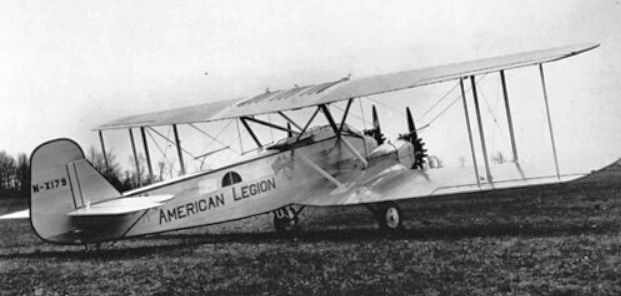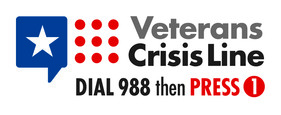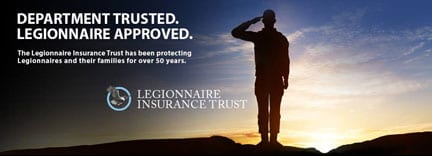
American Legion Airplane
In 1927, the race for the Orteig prize became one of the greatest sporting events in all history. People around the world followed every tidbit of news that was reported on it. Often if there was no news, reporters simply made it up to sell newspapers. It was part of the culture of the times.[1] Raymond Orteig, a New York hotel owner from Paris, set the goal of flying non-stop from New York to Paris, or from Paris to New York, with a prize of $25,000. From 1919 to 1925, no one attempted to win this prize. The technical advancements to make it possible just were not there.
Although a number of fliers announced their intent to compete in the race, only two filed applications in 1927 for the New York to Paris contest; Charles Lindbergh and Noel Davis. Others like Richard Byrd and Clarence Chamberlin announced that they would compete and comply with the race rules, but were not interested in the prize money and did not want to be restricted by the requirement of having to register for the prize sixty days before the flight.
Lt. Cdr. Noel Davis was Commander of the Naval Air Reserve under Admiral Moffett. He had gone to the Naval Academy with his copilot, Lt. Stanton “Bob” Wooster, whom was head of the Navy’s Propeller Research Center at Langley Field in southern Virginia. Both of them were excellent aeronautical engineers and as members of the American Legion, they looked to the Legion for support. Davis had two huge tasks ahead of him now; finding a suitable airplane to make the transatlantic trip and to find sponsors to fund the expedition.
He decided upon the Huff-Daland LB-3; an Army heavy bomber plane that had a solid reputation. It was a two-engine biplane with a large machine-gun emplacement in the nose. Davis planed on taking out the machine-gun emplacement and putting in a third Wright Whirlwind engine. The reliable air-cooled radial Whirlwind engine was the technology that finally made the attempt possible with its thrust to weight ratio.
Davis still faced some formidable obstacles; he needed to raise cash quickly, get his publicity arrangements made, and to come up with a name for the airplane. Being a well known veteran of World War I, having set and removed the North Sea Barrage under Admiral Strauss, and being a vocal proponent of military aviation, he turned to the American Legion organization. In 1927 the national convention was to be held back where it originated in Paris, France, on the tenth anniversary of the US entering the Great War. Who better to sponsor the flight of two war veterans who were still active in military aviation?
There was immediate support from the Aeronautics Commission, and at the urging of the chief lobbyist for the American Legion, John Thomas Taylor,[2] Davis wrote to Bowman Elder[3] (who was the Chairman of the American Legion convention to be held in France) and to Howard Savage[4] (the National Commander of the American Legion), whereby Davis conveyed his plans in detail. These letters were accompanied by letters from Porter Adams[5] (President of the National Aeronautic Association, and Chairman of the Aeronautic Committee for the American Legion’s Department of Massachusetts) and Rear Admiral William Moffett[6] (Chief of the Navy’s Bureau of Aeronautics); both urging the American Legion to lend their support to the effort.
Elder, at the national headquarters of the Legion in Indianapolis, promised to bring it before the National Executive Committee (NEC) of the American Legion and to promote the Legion’s support of the effort, and asked for more details.[7] There was a ground-swell of support from the average Legionnaire to many officers in the state and national organizations of the American Legion, but funding such an expedition was breaking new ground and many within the organization were hinting that the National Executive Committee would be cautious in their decision.
They were correct. After the National Commander had made national news at the christening of the airplane as it was named the “American Legion;” the NEC ruled that because they were going for a cash prize, it was a commercial venture that the American Legion could not support. However, they softened the ruling by allowing the airplane to be named “‘The American Legion,’ providing it could be accomplished without obligating Legion funds for the purpose.”[8] If Elder had his way, the Convention Committee would have underwritten the entire expedition by themselves.[9]
By this time, Davis and Wooster found other financial support, and spoke to some of the management of the American Legion Monthly Magazine as a back-up plan.[10] What they came up with was, in the April edition, they would publish an article authored by Davis telling of his plans for the flight. By this time the flight would either be completed or very near completion. In same edition, Davis would run an advertisement whereby for two dollars Legionnaires could send in to buy a post card that was transported on the flight, and it would be sent to them from Paris. The card would urge them to attend the Legion’s great tenth anniversary convention in Paris.
While already on leave from the military, Davis and Wooster decided to perform one last set of tests at Langley Field where Wooster was stationed, before flying to New York. Concerned about the extra thousand pounds of weight they had not calculated for in the airplane, they decided to make a series of ten more take-off flights. By adding extra fuel onboard, it was weight that would dissipate during the flight and insure that they would not run short of fuel just before making it to Paris.
Not sticking to the test plan, the last five hundred pounds was put on the plane for the final test flight. It was too much. The airplane shuddered as it lifted into the air. Unable to lift above the tree at the end of the runway, it banked and soared over the Back River. Caught in ground effect and unable to lift the airplane over the trees on the far bank of the river, Davis and Wooster decided to set the airplane down in the flat tidal marsh. Coming in for a perfect landing, the front wheels suddenly dropped into a hidden drainage ditch and skid nose first into a small pond. With no safety equipment at the time, Davis and Wooster were sitting in wicker seats and didn’t have a chance for survival. A few weeks later, Charles Lindbergh successfully made the flight.
Some weeks after the crash, Harry Guggenheim personally, not acting on behalf of the Daniel Guggenheim Fund, donated a trophy to the Aviation Division of the Naval Reserve “in memory of the late Lieutenant Commander Noel Davis, and that it might properly be called “The Noel Davis Trophy.”[11] Posthumously, Davis got the trophy he wanted for the men who served under his command. However, no lasting memorial or tribute was ever made to Davis or Wooster by the American Legion organization. Letters of condolences were sent to the National HQ in Indianapolis from around the world on the loss of their pilots.
References:
[1] F. L. Allen, Only Yesterday: An Informal History of the 1920’s, John Wiley & Sons, Inc., New York, 1997.
[2] Letter, from N. Davis to R. Hoyt; dated: 6 December 1926; from the Davis family archive.
[3] Letter, from N. Davis to B. Elder, American Legion National Headquarters, dated: 4 December 1926; from the archives of the American Legion National Headquarters, Indianapolis, Indiana.
[4] Letter, from N. Davis to H. Savage, American Legion National Headquarters, dated: 6 December 1926; from the archives of the American Legion National Headquarters, Indianapolis, Indiana.
[5] Letter, from P. Adams to H. Savage, dated: 6 December 1926; from the archives of the American Legion National Headquarters, Indianapolis, Indiana.
[6] Letter, from W. Moffett to B. Elder, dated: 6 December 1926; from the archives of the American Legion National Headquarters, Indianapolis, Indiana.
[7] Letter, from B. Elder to N. Davis, dated: 8 December 1926; from the archives of the American Legion National Headquarters, Indianapolis, Indiana.
[8] Letter, from N. Davis to B. Elder, dated: 15 January 1927; from the archives of the American Legion National Headquarters, Indianapolis, Indiana.
[9] Letter, from N. Davis to R. Hoyt; dated: 6 December 1926; from the Davis family archive.
[10] Letter, from N. Davis to R. Hoyt; dated: 14 December 1926; from the Davis family archive.
[11] Memorandum, from Naval Reserve Officers Association, to D. Guggenheim, reference Nav 161 EM A5-7/A21/Qr(50), dated: 26 July 1927; from the Davis family archive.











